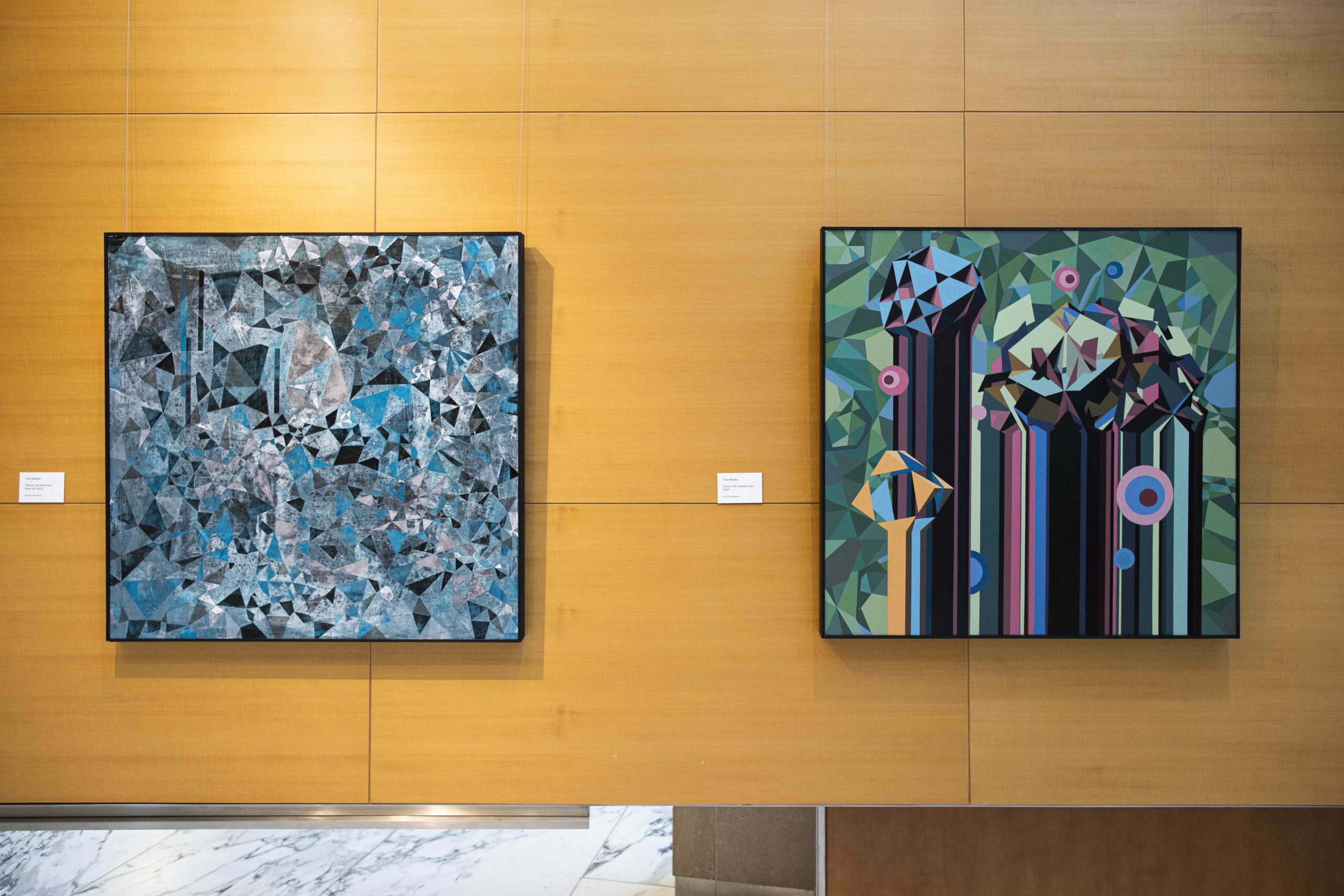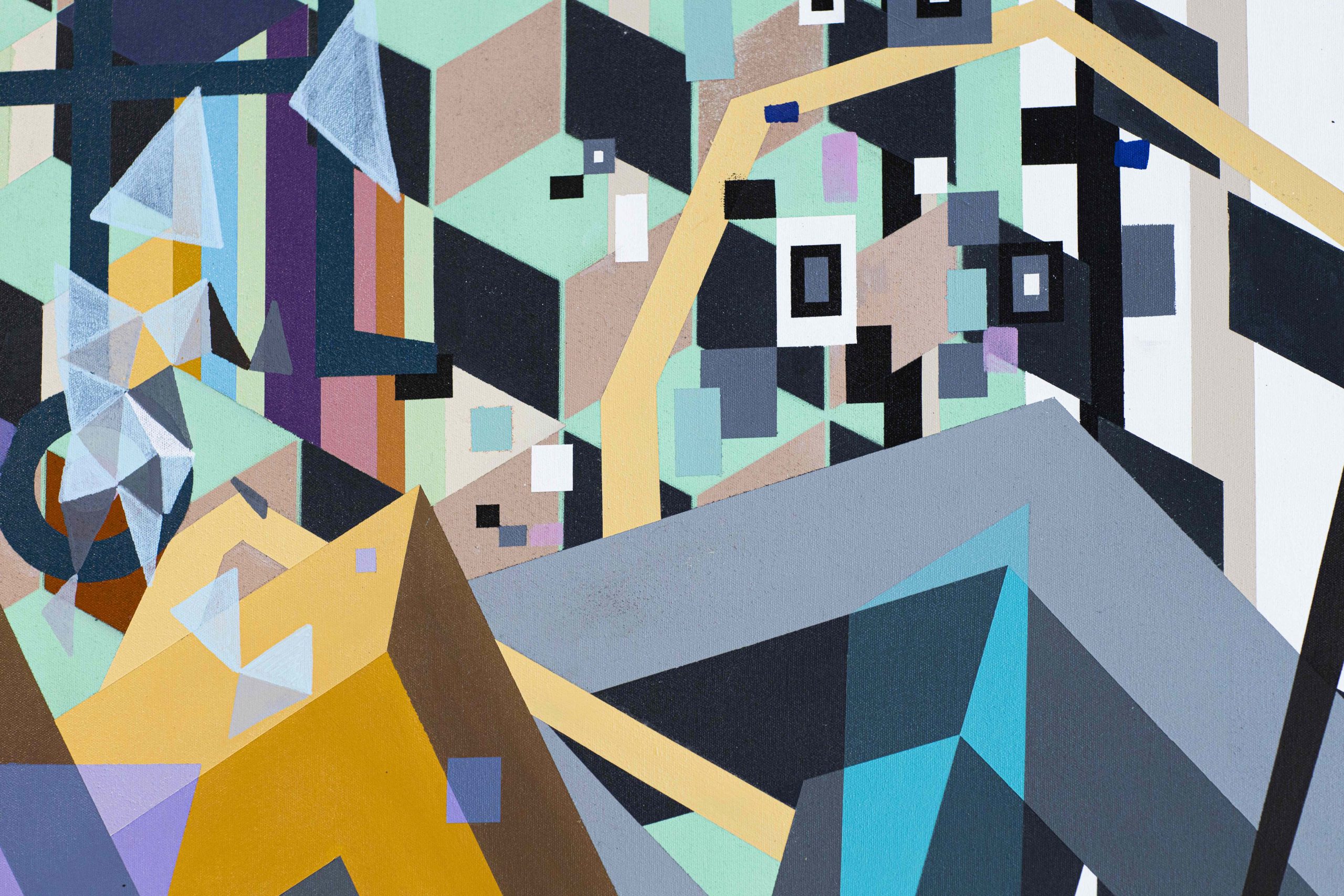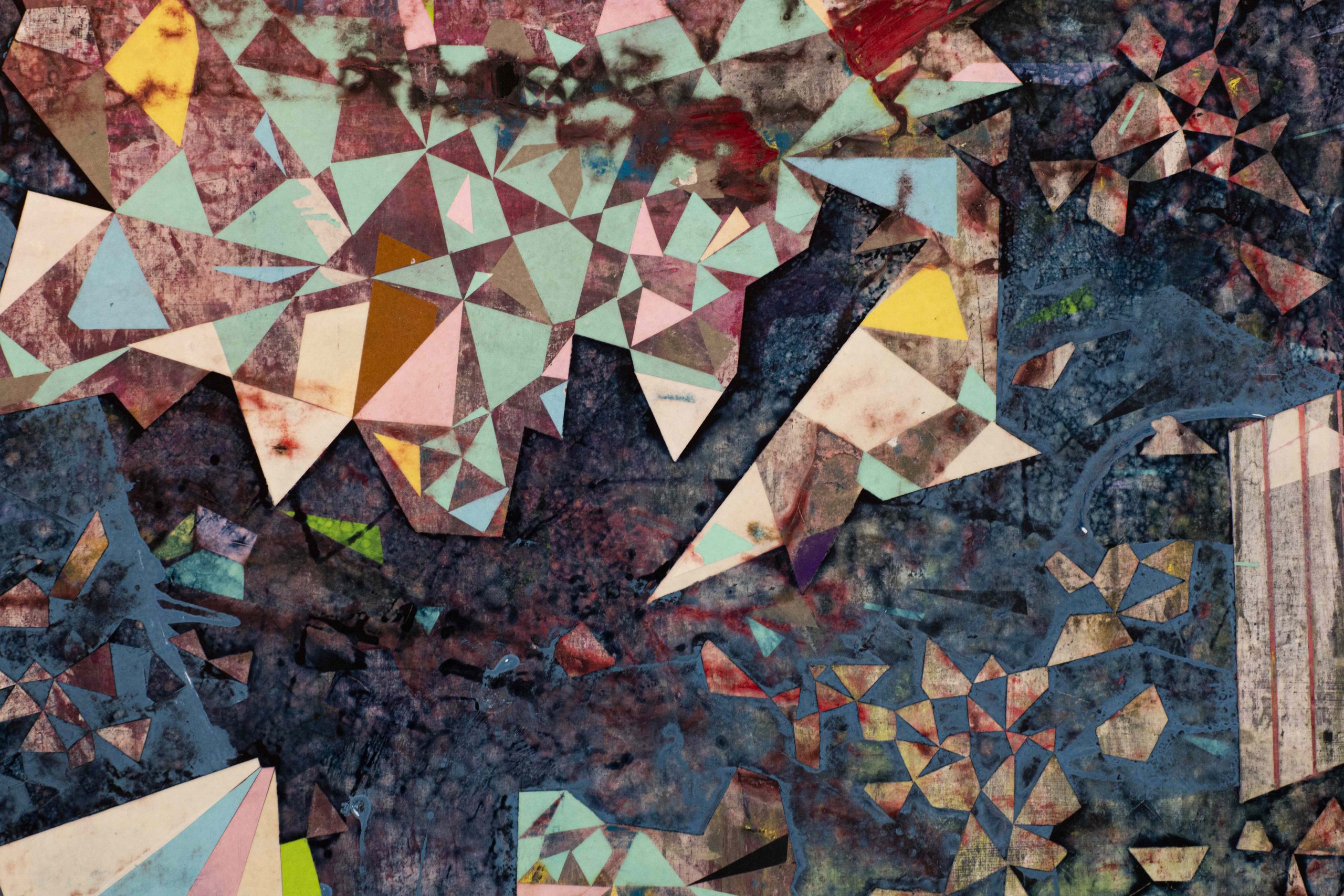Exploring "Incipit" with HoMA First Hawaiian Center artist Tom Walker
Above: Tom Walker: Incipit installation at First Hawaiian Center
“Tom Walker: Incipit” is one of three exhibitions featuring locally-based artists currently on view at HoMA First Hawaiian Center. “Incipit” is displayed alongside an exhibition of glass sculpture by Jonathan Swanz, and a group exhibition of mixed-media drawings, all available to visit during banking hours. This is the second in a series of posts about the current First Hawaiian Center exhibitions.
Tom Walker grew up in England and Germany and moved to Alaska as a high school senior. He went on to receive a Bachelor of Fine Arts from the University of Alaska, Fairbanks, and in 2012 relocated to Honolulu where he received his Master of Fine Arts from the University of Hawaiʻi, Mānoa. He currently teaches at Leeward Community College, and is part of a current exhibition #8x8_shangrila, at the Shangri La Museum of Art, Culture, & Design—read on for details. Additionally, be sure you take a few moments to watch the video Walker produced for HoMA, where he talks about the challenges of working from home during the pandemic. Keep an eye out for a follow-up video in which Walker delves deeper into his unique process.
Walker’s works combine traditional painting techniques with digital technologies to create detailed and elegant compositions which reference nature, mathematics and science. Recent paintings draw upon ancient Sumerian archetypes to describe the dichotomy between opposing forces of order and chaos. Titled after mythological figures, Walker’s works, created with the assistance of software imaging programs Photoshop and Stella 4D, are intended to represent the metaphysical fourth dimension. His canvases are filled with overlapping shapes that appear as crystalline structures floating in an ambiguous space, and speak to our innate desire to understand the complexity of the universe. He combines a crisp, clean, painting style in the tradition of hard edge abstraction and Op Art of the 1960s and 1970s, with a contemporary, digitally-enhanced sensibility. Overall, Walker’s incorporation of ancient mythology, traditional painting processes, and cutting edge technology, blend past, present, and future in visually striking, multi-faceted works.

TW
Left to right: Tom Walker, Earthpivot and Lahmu, the muddy ones, 2020. Acrylic on wood.
Katherine Love: How does Sumerian mythology connect with your contemporary life? Why do you feel it is relevant in today’s world?
Tom Walker: The narratives of Sumerian mythology are some of the oldest metaphysical conceptions of order and chaos. These abstractions have been with us for a long time and are ever present today. As the conceptual departure points for this work, my aim was to try and visually integrate order and chaos without overwhelming one or the other. In a broader sense these two concepts necessarily have to be managed to achieve and maintain a healthy individual, state, and country. Neither can reign supreme. Constructive and destructive qualities of both must be balanced to create harmony. These concepts exist outside of our physical understanding of the world, hence my use of these gods to visualize them.
As history has shown, an extended imbalance of either chaos or order can be disastrous for the individual and society. This analogy is apparent with the United States’ current political divisions. While I did not intend to specifically point to political and cultural division, the work has grown to reflect the analogy of chaos and order in the current state of affairs. Regardless of one’s particular stance, I think we can agree that there are some serious imbalances that need to be addressed. The title of the show, Incipit, is in reference to the first words of any text, literally meaning ‘it begins.’ We’ll see where we go from here.
KL: Have you always been drawn to abstraction? As a student, did you explore representation? Are there particular artists who you look to for inspiration?
TW: Much of my earlier years in painting were grounded in representation and one might say ‘old fashioned.’ I loved Renoir’s drawings, Dürer’s prints, and Sargent’s portraits. I always had an aesthetic appreciation for abstraction, but it wasn’t until I got to graduate school that I began to understand how the language of abstraction could apply to the themes and concepts that interested me. Ian Davenport’s line paintings fundamentally shifted my practice entirely, and I began to think more about the material and process of painting, allowing more chaos into my work, you could say. I also became fascinated with the precision and technical execution of certain geometric abstract painters such as Peter Halley and Peter Young. The artists that I admire most today are those that maintain a balance between rigidity of control and fluidness of chance, such as Mark Bradford’s city blocks, and Tomory Dodge’s striped paintings.
KL: When did you first begin to incorporate digital technology as a method to work out your compositions?
TW: I have always used Photoshop to some degree with my work, even when I was working representationally. At some point as an undergrad, Photoshop became a replacement for my sketchbook. It was faster, easier, and more efficient to make changes in real time. You definitely lose something when you discard the pencil and paper, but you gain other things as well.

TW detail
Tom Walker, Anduruna, 2020 (detail). Acrylic on wood.
KL: Could you describe how you use Photoshop and Stella 4D? Do you start with a found image or a drawing that you scan into the program?
TW: For this body of work, it usually started out with a particular 4-dimensional shape that I would view in Stella 4D. These polychorons are tremendously complex, and you can refine shapes by specifying the number of facets, vertices, and intersections. They have wonderful names like Gadros Daskydox and Sadros Daskydox (each of these having millions of components to them). I would work with one of these polychorons—rotating, cutting, resizing, and editing out until I was content with the 2-dimensional display. I would then bring that ‘flat’ representation into Photoshop and continue to edit with the addition and removal of facets, textures, layers, and blending modes. In this way I can manipulate color and opacity with a greater degree of control and accessibility.

TW detail 2
Tom Walker, Ki, the mother, 2020 (detail). Acrylic on wood.
KL: At what point do you stop working in the digital realm and translate your design to paint on canvas/wood? Do the colors you choose to paint with also translate from the digital?
TW: Once I have a composition worked out in Photoshop, I will then begin to transfer the image to my wood surface via drafting techniques, rulers, and tape. I may project sections of the Photoshop image onto the wood surface and trace out dominant compositional features. Sometimes I manipulate the image further in Photoshop and then re-project that iteration. As the painting on wood begins to take form, I can make large compositional and formal changes by going back to the digital image. Sometimes the analog painting will inform a digital change or vice versa. Oftentimes I end up with two different pieces that originated from the same image source—one that grew out of experimenting with the physical painting, and one that further explored the digital possibilities.
It can be quite challenging to work between colors produced digitally and those possible with pigment. Sometimes the light-produced colors work well with the overall aesthetic, but prove impossible to reproduce with pigment, and sometimes the pigment-based colors would be best, but do not translate to the digital realm. At times color accidents occur that are better than my planned outcome, and other times it is a lost cause.
KL: Could you tell us about your work currently installed at Shangri La?
TW: Absolutely. This past summer, eight visual artists and eight performing artists were invited to create original works that respond to the concept of place at Shangri La. Each artist was given one of eight celebrated spaces to serve as both a creative prompt and exhibition space. My piece, Precipice, is a large sculptural form set in the beautiful Textile Gallery. The show can be seen live now as a virtual exhibition through March 9.
KL: Do you have other upcoming projects?
TW: I have some big plans with my studiomates to expand our space, Aream Studios, into a more prominent role in the Honolulu art community. Stay tuned for that!
Tom Walker: Incipit is on view at HoMA First Hawaiian Center through February 19, 2021.
-Katherine Love, Assistant Curator, Contemporary Art